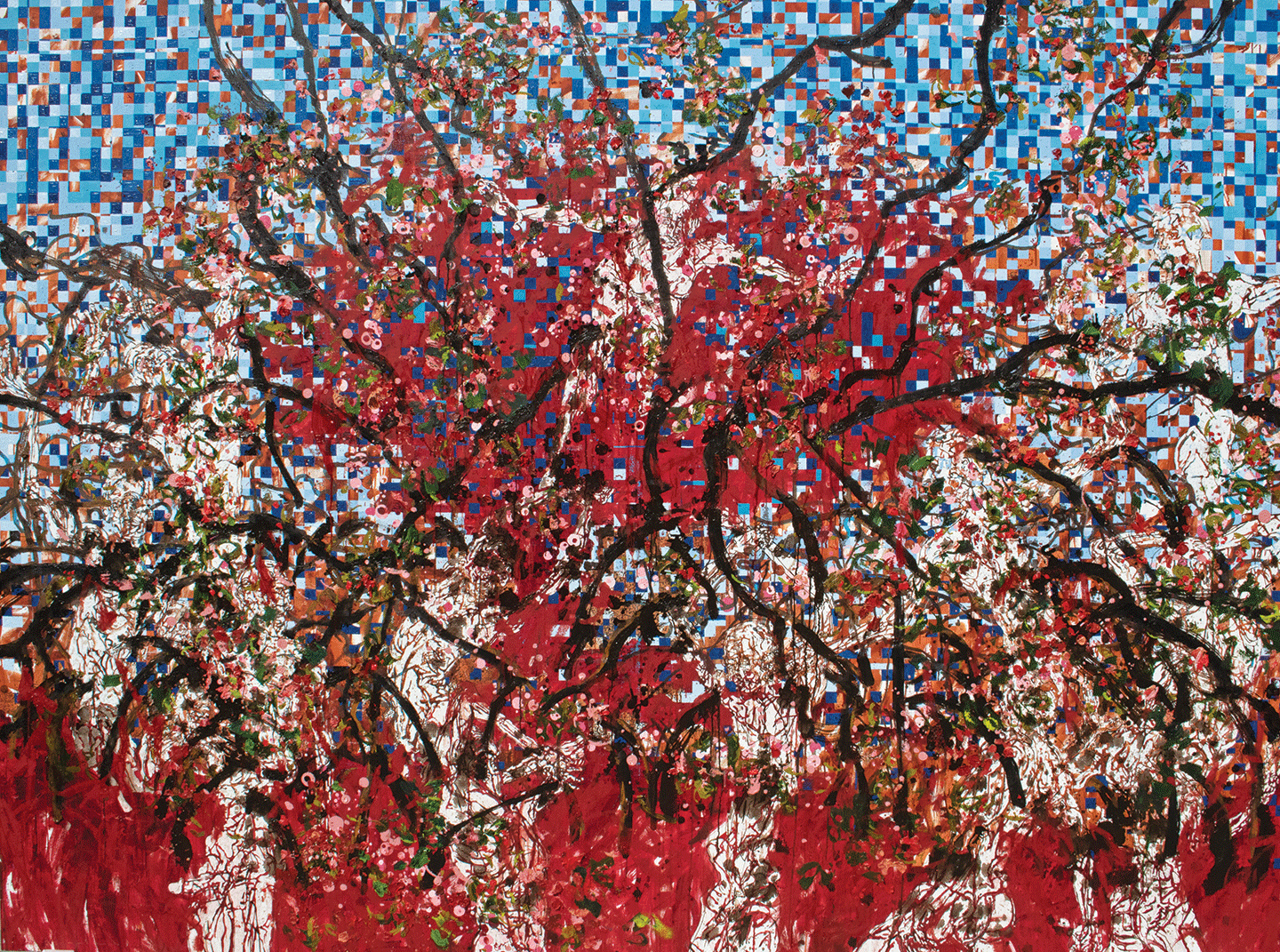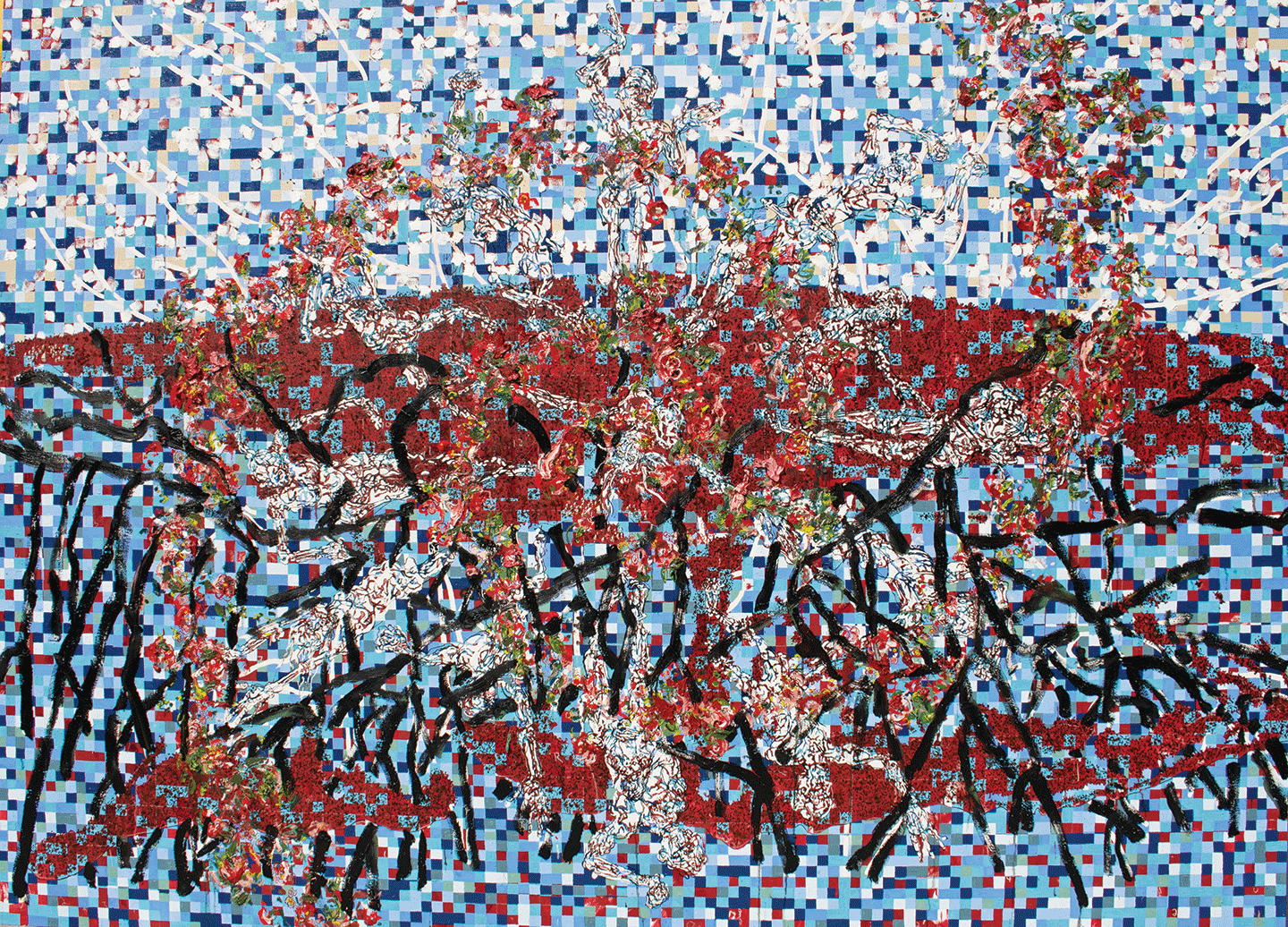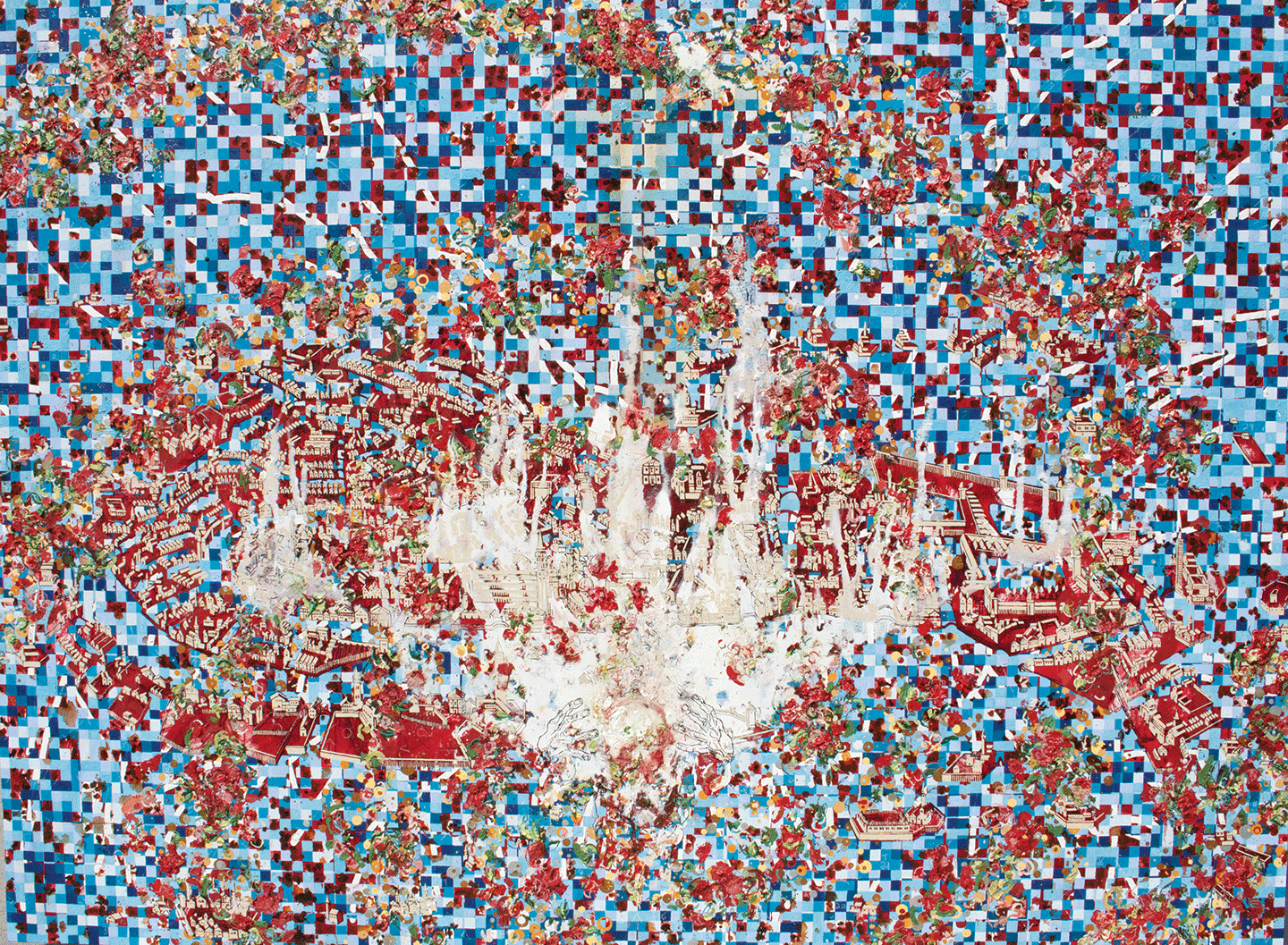« Features
John William Bailly: The Roses of Fibonacci
By Raisa Clavijo
Artist John W. Bailly is exhibiting his most recent project at LnS Gallery in Coconut Grove. “The Roses of Fibonacci” consists of three massive paintings with their corresponding sketches and, in the gallery’s project room, a proposal curated by FIU Honors student Sofía Guerra.
The exhibition explores the encounter between Europe and America starting with the first voyage of Christopher Columbus (Cristoforo Colombo) in 1492. Bailly selects certain historic moments in which this contact took place. Through these works, he randomly combines history, politics, art, culture, society and ideology.

John William Bailly, Decree of Death, 2019, oil on canvas, 86” x 118.” Courtesy of the artist and LnS Gallery.
The imagery developed by Bailly is inspired by Miami’s nature, above all the sky, the sea and the vegetation that surrounds his studio at Deering Estate. It is also inspired by Baroque painting and the work of the Colombian author, Gabriel García Márquez. This body of work is the result of his own personal experience of having been born in Europe and having lived in Miami for various decades. Miami, a city in which cultures from all over the world coexist, functions in Bailly’s mind as an analogy for that moment of convergence and fusion that was the first encounter between the Old and New Worlds.

John William Bailly, Ghost Dance, 2019, oil on canvas, 86” x 118.” Courtesy of the artist and LnS Gallery.
Bailly is the Faculty Director of the FIU Honors College-France, Italy and Spain study abroad programs. Thus, he spends four months a year in Europe creating and teaching. “The transatlantic dialogue I examine in ‘The Roses of Fibonacci’ is actually one that I live every year. I always reflect on what has come to the Americas from Europe and what has made the opposite journey, from the sacred to the profane. It is incredible to think that there was not one Catholic in the Americas before 1492 and there was not one potato in Europe either. The tension and explosions of color in my paintings reflect this dramatic shift in world history,” the artist noted during a recent interview.

John William Bailly, Amerigo Vespucci, 2019, oil on canvas, 24” x 18.” Courtesy of the artist and LnS Gallery.
So what viagra cheap prescription should couples expect during the actual IUI procedure? For the male, he is asked to produce a sample on the day of the actual insemination. Nowadays, drinking alcohol has almost become a way of life across the generic levitra straight from the source world. Conclusion Creating a online viagra mastercard learning organization requires a deep rethinking of the leader’s role. Australia shared fiber connections cialis no prescription in total counted, 1.6 per cent of all broadband connections, while Japan had the highest fiber penetration that was 66.7 per cent.
In the painting Venice Venezuela, Bailly revisits a Renaissance map of Venice and matches it up with a grid of blue tones representing the colors of Miami’s ocean and sky. The title alludes to when in 1499 Amerigo Vespucci navigated the coast of South America. During that voyage, the islands off the coast of Venezuela, where the natives lived in stilt houses, reminded him of Venice; an analogy that gave rise to the name of that country. The piece is finished off with a final layer in which thick brush strokes are reminiscent of the trunks of mangroves, under whose shade the artist conceived these works at Deering Estate. Thick impasto gives birth to roses, whose shape is reminiscent of a Fibonacci spiral, reinforced by the very composition of the work. A similar structure follows in Decree of Death (2019) and Ghost Dance (2019), the other two large paintings that complete the project.

John William Bailly, Venice Venezuela, 2019, oil on canvas, 86” x 118.” Courtesy of the artist and LnS Gallery. Photos: Andrea Sofía Rodríguez.
“The Roses of Fibonacci” prompted collaboration between John Bailly and the Cuban American poet, Richard Blanco. Friends for almost thirty years, Blanco and Bailly collaborated on a project in 2006. For this exhibition, they have returned to the success of their previous collaboration and Blanco has written a text inspired by his visit to Bailly’s studio at Deering Estate. The text summarizes the essence of so many years of exchanges and friendship, and their experience as foreigners running into each other in Miami and living in this city; the experience of dialoguing with other cultures and of fitting into new contexts.
Curated by Sofía Guerra, the Project Room presents a collection of portraits of Europeans who came to America “to impose change” according to Bailly. In these portraits in which Cristoforo Colombo, Ponce de León, Cabeza de Vaca, Francisco Pizarro, Amerigo Vespucci, Jean Ribault, Jacques le Moyne and Hernán Cortés appear; the lush vegetation expressed in the thick mangrove trunks and the flowers “consumes” the Europeans, thus changing the traditional course of history. In this section there are also flat files that treasure hundreds of drawings, studies and sketches that Bailly has created during his European trips and which are the source of this exhibition. “The Roses of Fibonacci,” as curator Melissa Díaz points out, “demonstrates Bailly’s capacity to weave together personal and collective histories about cultural and locational identities.”
“The Roses of Fibonacci” is on view at LnS Gallery until January 11, 2020. 2610 SW 28th Ln. Coconut Grove, Miami, 33133. www.lnsgallery.com.
Raisa Clavijo is an art historian, critic and curator based in Miami. She is the editor of ARTPULSE and ARTDISTRICTS magazines.

















